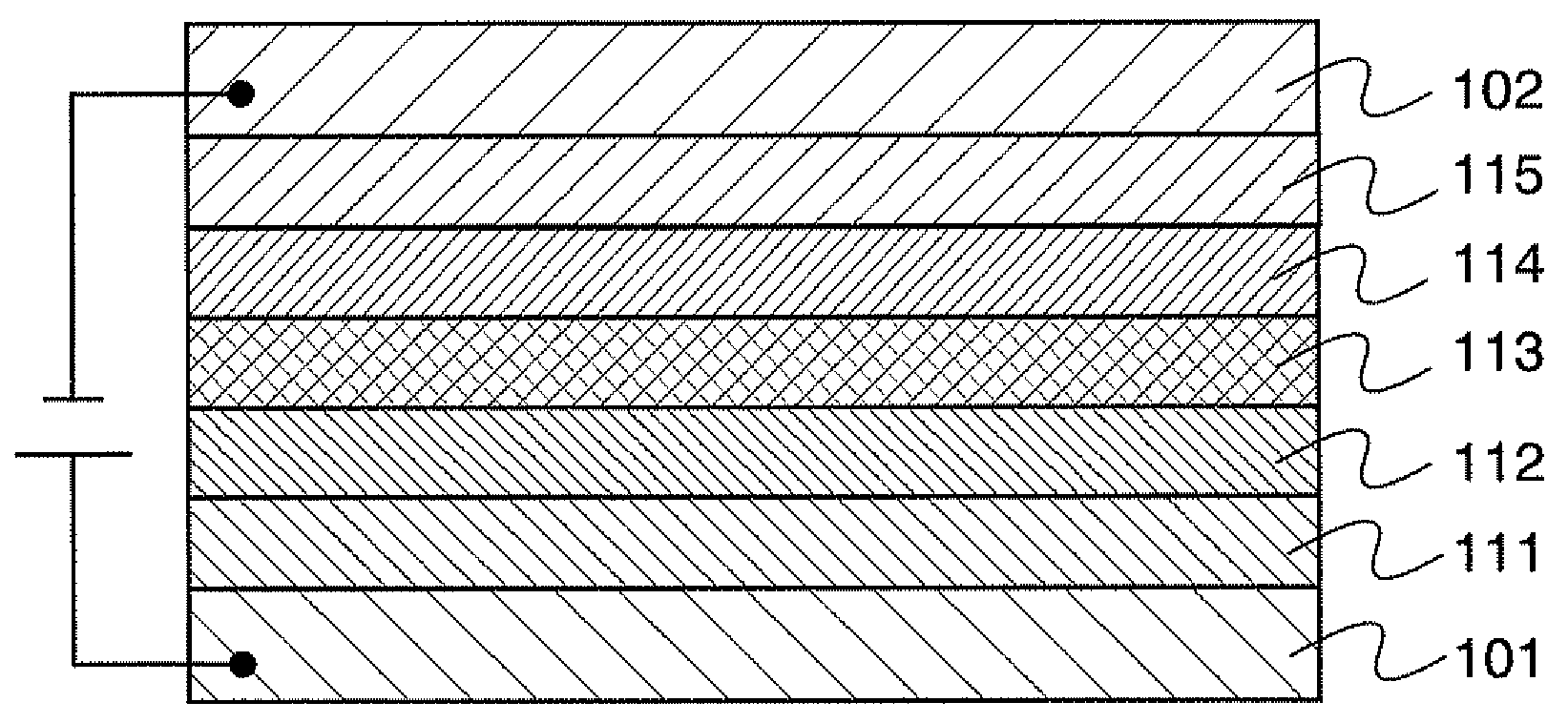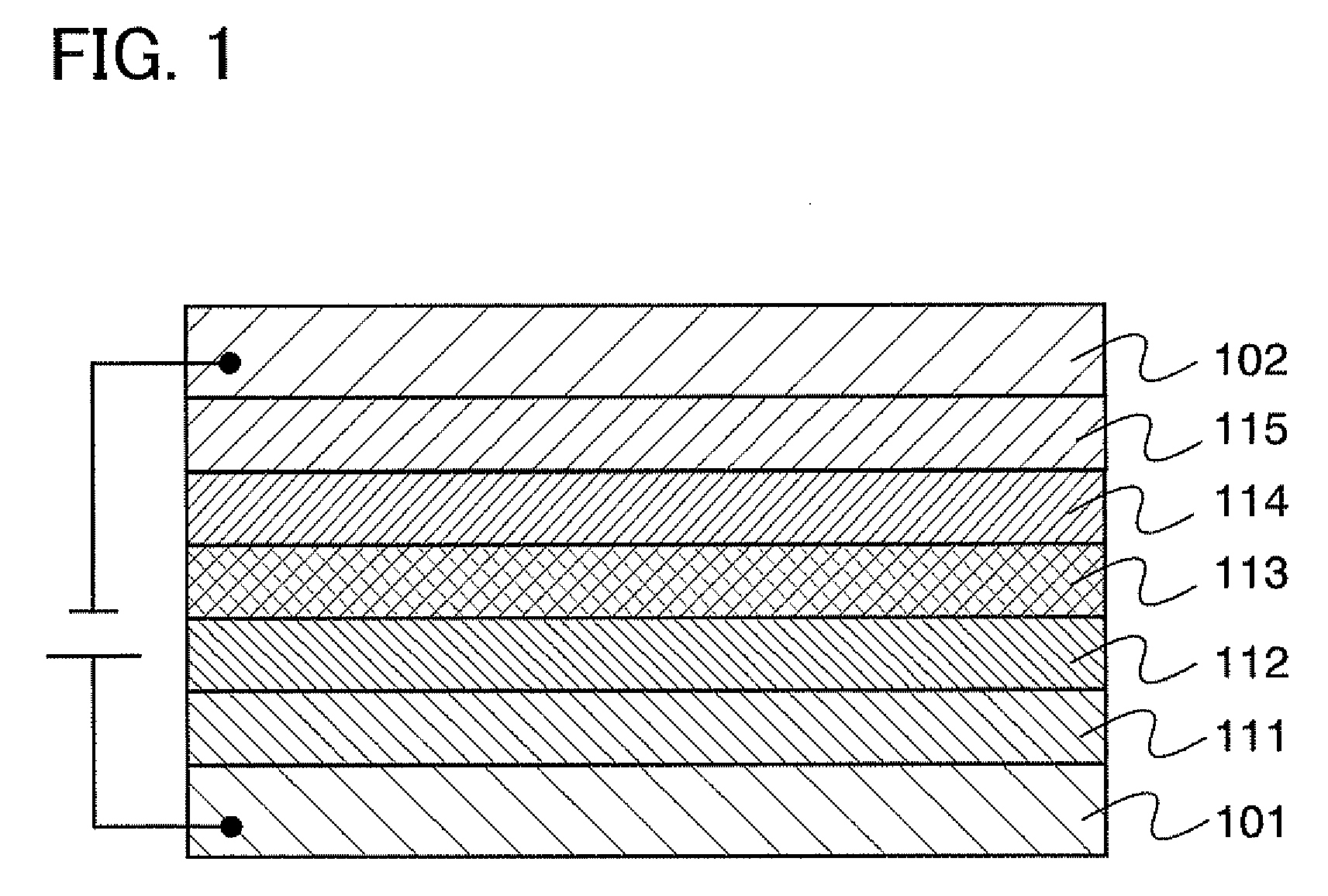Organometallic Complex, and Light-Emitting Element, Light-Emitting Device, and Electronic Device Using the Organometallic Complex
a technology of organometallic complexes and complexes, applied in the field of organometallic complexes, can solve the problems of limited types of ethylenediamine derivatives and -diketone which can be used as raw materials, and limitations on the types of organometallic complexes using pyrazine derivatives, etc., to achieve high color purity, wide variation of emission color, and high emission efficiency
- Summary
- Abstract
- Description
- Claims
- Application Information
AI Technical Summary
Benefits of technology
Problems solved by technology
Method used
Image
Examples
embodiment mode 1
[0074]Embodiment Mode 1 will describe an organometallic complex of the present invention.
>
[0075]An organometallic complex of the present invention is formed by ortho metalation of a 2-alkoxy-3-arylpyrazine derivative represented by the following general formula (G0) with respect to an ion of a metal belonging to Group 9 or Group 10.
[0076]In the formula, Ar represents an aryl group. R represents an alkoxy group having 1 to 4 carbon atoms, and R1 and R2 individually represent hydrogen or an alkyl group having 1 to 4 carbon atoms.
[0077]The 2-alkoxy-3-arylpyrazine derivative represented by the general formula (G0) can be synthesized by the following simple synthetic scheme. For example, as represented by the following scheme (a), the 2-alkoxy-3-arylpyrazine derivative can be obtained by reacting a chloropyrazine derivative (A1) with alkoxide (A2). Alternatively, as shown in the following scheme (a′), a halide of arene (A1′) is lithiated with alkyllithium or the like, and is reacted with...
embodiment mode 2
[0094]Embodiment Mode 2 will describe a mode of a light-emitting element which has the organometallic complex of the present invention described in Embodiment Mode 1, as a light-emitting substance with reference to FIG. 1.
[0095]FIG. 1 is a view showing a light-emitting element including a light-emitting layer 113 between a first electrode 101 and a second electrode 102. The light-emitting layer 113 includes such an organometallic complex of the present invention as described in Embodiment Mode 1.
[0096]By applying a voltage to such a light-emitting element, holes injected from the first electrode 101 side and electrons injected from the second electrode 102 side recombine with each other in the light-emitting layer 113 to bring the organometallic complex of the present invention to an excited state. When the organometallic complex in the excited state returns to the ground state, it emits light. As thus described, the organometallic complex of the present invention functions as a lig...
embodiment mode 3
[0128]A light-emitting element of the present invention may have a plurality of light-emitting layers. For example, white light can be obtained by providing a plurality of light-emitting layers and mixing light emitted from each of the light-emitting layers. Accordingly, white color light emission can be obtained for example. In Embodiment Mode 3, a light-emitting element having a plurality of light-emitting layers is described with reference to FIG. 2.
[0129]In FIG. 2, a first light-emitting layer 213 and a second light-emitting layer 215 are provided between a first electrode 201 and a second electrode 202. Mixed light of light emitted from the first light-emitting layer 213 and light emitted from the second light-emitting layer 215 can be obtained. A separation layer 214 is preferably formed between the first light-emitting layer 213 and the second light-emitting layer 215. When voltage is applied such that the potential of the first electrode 201 is higher than the potential of t...
PUM
 Login to View More
Login to View More Abstract
Description
Claims
Application Information
 Login to View More
Login to View More - R&D
- Intellectual Property
- Life Sciences
- Materials
- Tech Scout
- Unparalleled Data Quality
- Higher Quality Content
- 60% Fewer Hallucinations
Browse by: Latest US Patents, China's latest patents, Technical Efficacy Thesaurus, Application Domain, Technology Topic, Popular Technical Reports.
© 2025 PatSnap. All rights reserved.Legal|Privacy policy|Modern Slavery Act Transparency Statement|Sitemap|About US| Contact US: help@patsnap.com



